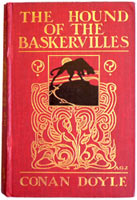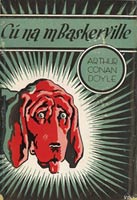






| Issue 9 : Hound, Chapters 12 | ||||||||||
Just as Holmes enjoyed trumping Watson's deductions about the walking stick at the beginning of the story, now he revels in his friend's astonishment. "...for when I see the stub of a cigarette marked Bradley, Oxford Street, I know that my friend Watson is in the neighbourhood." This imaginary tobacconist's shop would have been located just a few blocks from Baker Street. I was still rather raw over the deception which had been practised upon me, but the warmth of Holmes's praise drove my anger from my mind. Holmes often hurts Watson's feelings by withholding information from him. Later, Holmes has a logical explanation for his deception, and Watson always forgives him. For information about an interesting made-for-TV version of Hound (2003) that explores this dynamic in depth, see below. When I learned that the missing man was devoted to entomology the identification was complete. It is ironic that Stapleton's one harmless passion leads to his downfall. And a new sound mingled with it, a deep, muttered rumble, musical and yet menacing, rising and falling like the low, constant murmur of the sea. Holmes and Watson hear the hound before they see it. The hound is an elusive presence in the story--this authorial choice makes the beast more frightening and formidable when it finally does appear. Illustrators of Hound must decide what conception of the hound will have maximum impact. Is it better to represent him as a monster, or to leave him a shadowy presence? Filmmakers face the same dilemma. Above right, the cover illustration for the first complete edition of Hound shows the animal in silhouette against the moon. The stylish, art-deco cover sports a red background with gold tracery and questions marks. The interior illustrations by Sidney Paget had appeared in the original Strand Magazine series. This edition was published in England by Georges Newnes, owner of The Strand Magazine, in 1902. | ||||||||||
Copyright ©
2006 Stanford University. All rights reserved. Stanford, CA 94305, (650)723-2300
l Terms
of Use

